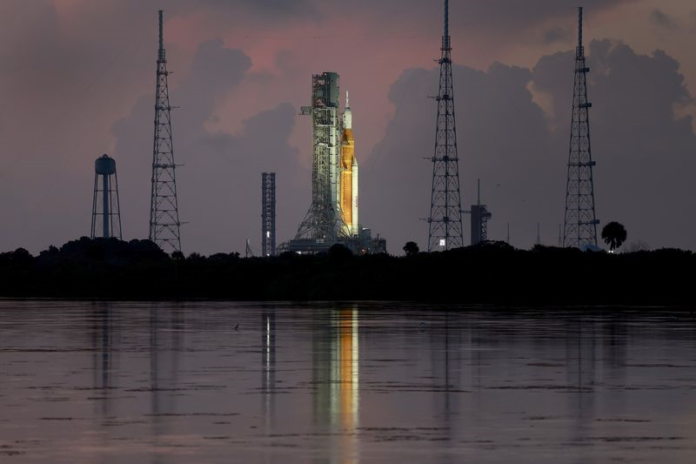
The US Space Agency, NASA has scheduled the launch of Artemis 1 Moon Rocket on September 3 at 2:17 pm Florida time. It is the second attempt of the giant Moon Rocket after it called off on 29 August due to some technical issues.
The countdown was scrubbed on 29 August (Monday) because of a temperature issue with one of the four RS-25 engines that power the SLS core stage wasn’t cooling down to the proper prelaunch temperature. An error in the temperature conditioning of the liquid hydrogen system on one of the four main booster engines led to the end of the first attempt.
The space agency reworked on its engine chill process and is back with the second attempt. After a meeting held on Sep 1, the Artemis 1 Mission team gave the go-ahead to proceed with a liftoff attempt on this Saturday from NASA’s Kennedy Space Center in Florida.
At a press briefing on Thursday in Florida, Mission Manager Michael Sarafin said, they are comfortable with their risk posture and again proceeding into Saturday launch attempt. There is no guarantee that they are going to get off on Saturday, but they’re going to try. NASA officials said, if the launch attempt this Saturday is called off for reasons unrelated to the rocket’s mechanics — such as weather or air traffic — they expected to be able to try again as soon as 48 hours later.
This highly anticipated Liftoff is scheduled to occur during a two-hour window that opens Saturday at 2:17 p.m. EDT (1817 GMT). The Live coverage will begin on Saturday, Sept. 3, at 12:15pm ET (16:15 UTC) on NASA Twitter, YouTube, Twitch, Facebook.
The Artemis I mission will be the first mission for the SLS and for NASA’s Artemis program, aiming to establish a sustainable human presence on moon and around it for scientific discovery and economic development by 2025. If the launch proceeds as per the planning, the SLS rocket will boost an uncrewed Orion spacecraft on a journey to the moon. Before returning to Earth, the capsule will make multiple orbits of the moon for a total journey of about a month, ending in a splashdown off the California coast.
To see the live coverage visit here https://www.nasa.gov/nasalive



















